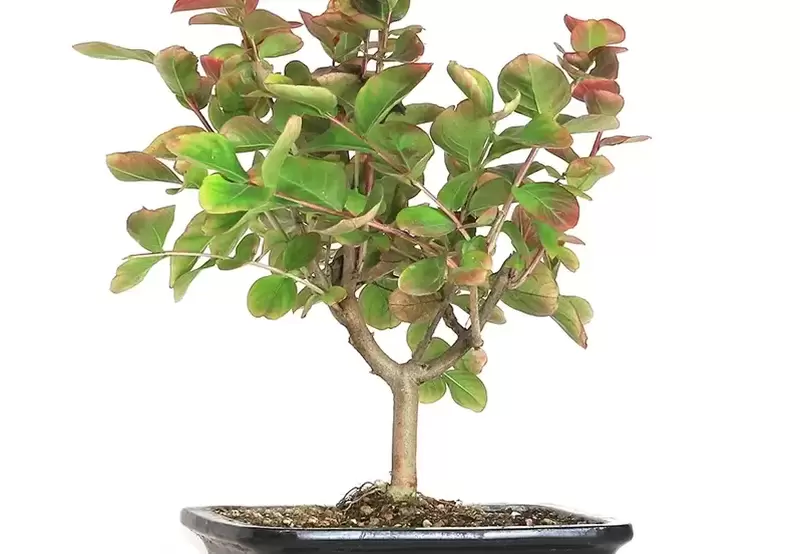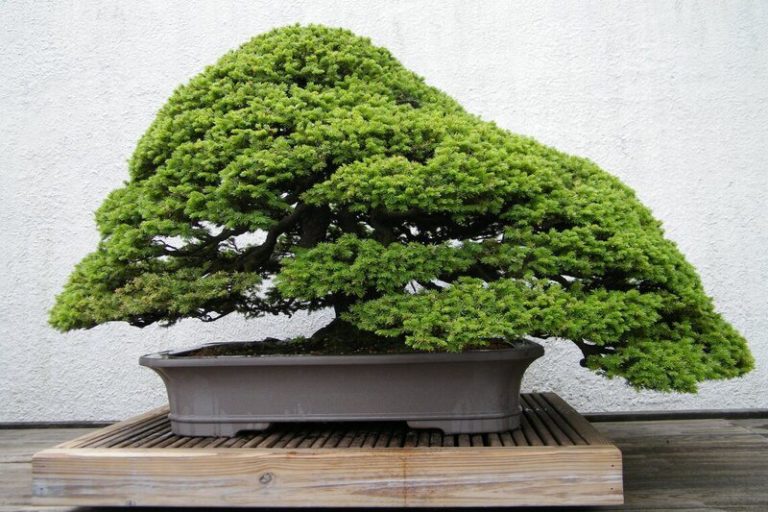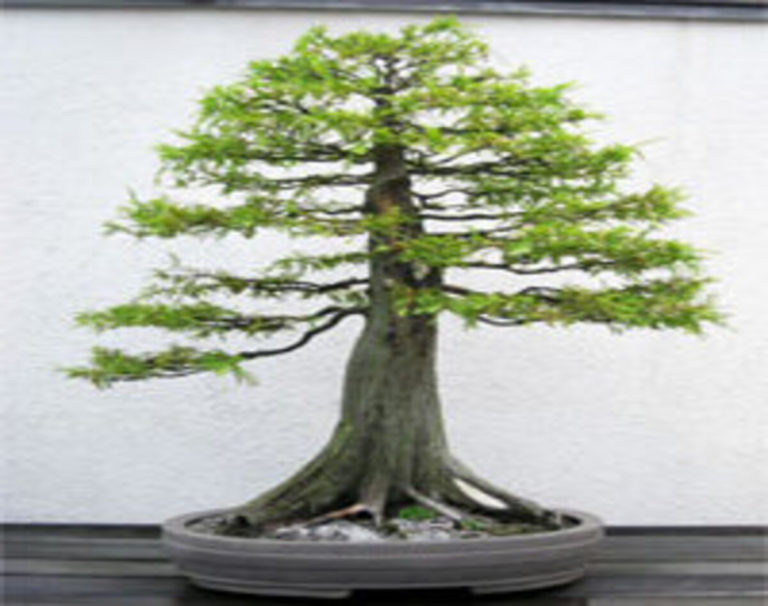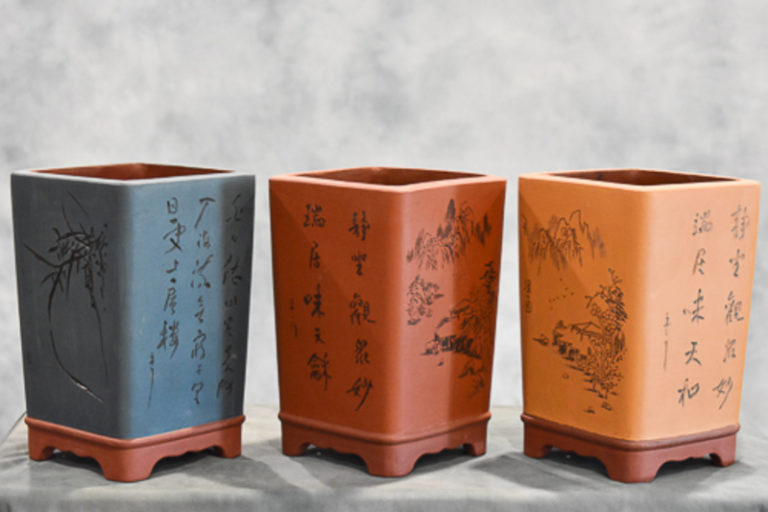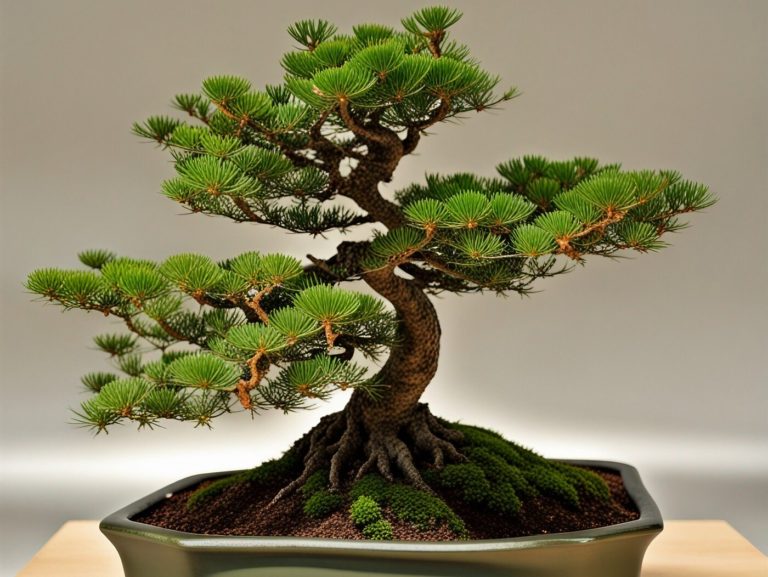Crepe Myrtle Bonsai: A Unique and Stunning Addition to Your Home
Crepe myrtle bonsai is a type of miniature tree that is grown from crepe myrtle plants. This unique form of bonsai requires special care and attention to achieve its desired shape and beauty. In this article, we will discuss the important aspects of growing crepe myrtle bonsai, including choosing the right crepe myrtle, potting and pruning, watering and fertilizing, and maintenance tips.
What is Crepe Myrtle Bonsai ?
Growing a crepe myrtle tree in a small pot. Usually, you use the Lagerstroemia indica type. Bonsai is the art of making a small, beautiful copy of a real tree. Careful pruning is used to control the tree’s size and shape, and wiring is used to shape the branches into the desired shape. The general balance and symmetry of the tree is also carefully considered. Crepe myrtles are great for bonsai because they have beautiful features like bright summer flowers, bark that peels off, and unique leaves.
Choosing the Right Crepe Myrtle for Bonsai
Choosing the right crepe myrtle for bonsai is crucial for the success of your plant. Here are some tips for selecting the best crepe myrtle for your bonsai:
- Look for a thick trunk: A thick trunk will give your crepe myrtle bonsai a more mature and established look.
- Good branching structure: A well-branched crepe myrtle will give you more options for shaping your bonsai.
- Small leaves: Look for crepe myrtle plants with small leaves, as these are easier to manage and shape into the desired form.
- Dwarf varieties: Dwarf varieties are naturally smaller and more compact, making them ideal for bonsai.
- Consider the season: The best time to start a crepe myrtle bonsai is in the early spring when the tree is coming out of dormancy. This will give your tree the best chance of success.
By following these tips, you can select the perfect crepe myrtle for your bonsai and set yourself up for success in growing a healthy and beautiful tree.
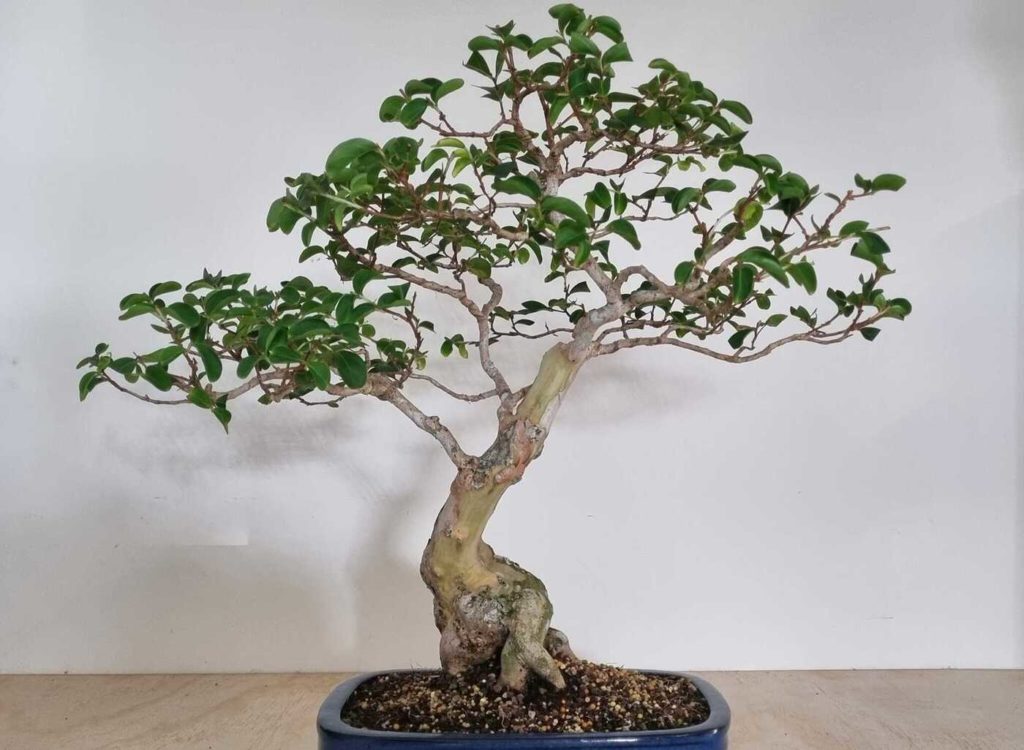
Potting and Pruning Crepe Myrtle Bonsai
Potting and pruning are important aspects of crepe myrtle bonsai care. Here are some tips for potting and pruning your crepe myrtle bonsai:
Potting
- Use well-draining soil: Use a well-draining soil mix that consists of 50% akadama and 50% pumice. This will allow water to flow freely through the soil and prevent overwatering.
- Trim the roots: Before potting your crepe myrtle bonsai, trim the roots to fit the pot. This will prevent the roots from becoming tangled and allow for proper growth.
- Anchor the tree: Use wire to anchor the tree in place, making sure it is secure in the pot.
Pruning
- Remove dead or diseased branches: Regularly remove any dead or diseased branches to prevent the spread of disease and promote healthy growth.
- Trim back new growth: Trim back new growth to encourage branching and shape the tree. Crepe myrtle bonsai can be shaped into many forms, including formal upright, informal upright, slanting, and cascading.
- Use proper pruning tools: Use clean, sharp pruning shears or scissors to prevent damaging the tree.
By following these potting and pruning tips, you can keep your crepe myrtle bonsai healthy and well-shaped. Remember to prune regularly to maintain the desired form and shape of your bonsai.
Watering and Fertilizing Crepe Myrtle Bonsai
Watering and fertilizing are important for the health and growth of your crepe myrtle bonsai. Here are some tips for watering and fertilizing your crepe myrtle bonsai:
Watering
- Keep the soil moist: Crepe myrtle bonsai prefer consistently moist soil, but not overly saturated soil. This will prevent the roots from rotting and keep the tree healthy.
- Water when the top inch of soil feels dry: Check the soil moisture regularly and water your bonsai when the top inch of soil feels dry to the touch.
- Use room temperature water: Use room temperature water, as cold water can shock the roots and cause damage.
Fertilizing
- Use a balanced, slow-release fertilizer: Use a balanced fertilizer with equal amounts of nitrogen, phosphorus, and potassium. Slow-release fertilizers are ideal for crepe myrtle bonsai, as they release nutrients gradually over time.
- Fertilize during the growing season: Fertilize your bonsai during the growing season, from spring to fall, to promote healthy growth.
- Reduce fertilizer use in the winter: Reduce fertilizer use in the winter, as your crepe myrtle bonsai will be in a state of dormancy and will not require as much fertilizer.
By following these watering and fertilizing tips, you can ensure the health and growth of your crepe myrtle bonsai. Remember to check the soil moisture regularly and fertilize appropriately to promote healthy growth.
Maintenance & Care of Crepe Myrtle Bonsai
Maintenance of your crepe myrtle bonsai is essential to keep it healthy and thriving. Here are some tips for maintaining your crepe myrtle bonsai:
1. Regularly check for pests and diseases: Regularly check your crepe myrtle bonsai for pests such as aphids, spider mites, and scale insects, as well as signs of disease such as yellowing leaves, powdery mildew, and root rot. If you notice any issues, take action immediately to prevent them from spreading.
2. Keep your bonsai clean: Regularly clean your bonsai by wiping the leaves with a soft cloth or brushing away any debris that may have accumulated on the tree. This will help prevent the growth of mold and other harmful organisms.
3. Repot your bonsai every 2-3 years: Repotting your crepe myrtle bonsai every 2-3 years will ensure that it has enough room to grow and thrive. This is also a good opportunity to check the roots for any issues and trim them if necessary.
4. Provide sufficient light: Crepe myrtle bonsai require at least six hours of direct sunlight each day. If you are growing your bonsai indoors, place it near a sunny window or use artificial grow lights to supplement the natural light.
5. Regularly prune your bonsai: Prune your crepe myrtle bonsai regularly to maintain its desired shape and size. This will also promote healthy growth and prevent the tree from becoming too leggy or overgrown.
Crepe Myrtle Bonsai Care Sheet
| Aspect | Care Tips |
| Watering | Water regularly, allowing the soil to dry slightly between watering |
| Light | Full sun to partial shade, protect from intense afternoon sun |
| Temperature | Warm to hot temperatures, ideally between 70-90°F (21-32°C) |
| Soil | Well-draining soil, ideally with some sand or gravel |
| Fertilizer | Use a balanced fertilizer every 2-4 weeks during growing season |
| Pruning | Regularly prune and shape the tree to maintain its form, prune in late winter or early spring |
| Wiring | Use wire to shape branches when young and flexible |
| Repotting | Repot every 2-3 years in the spring, trimming roots as needed |
| Pests/Disease | Watch for aphids and powdery mildew, treat promptly if detected |
By following these maintenance tips, you can ensure the health and beauty of your crepe myrtle bonsai for years to come. Remember to monitor your bonsai regularly and take action promptly if you notice any issues.
Conclusion
Crepe myrtle bonsai is a unique and rewarding type of bonsai to grow. By following these tips for choosing the right crepe myrtle, potting and pruning, watering and fertilizing, and maintenance, you can successfully grow a beautiful and healthy Crepe Myrtle Bonsai.
FAQ:
Q: What is a Crepe myrtle bonsai?
A: Crepe myrtle bonsai is a tiny Crepe myrtle tree that has been grown and groomed to fit into a small container or pot.
Q: How do you grow Crepe myrtle bonsai?
A: Crepe myrtle bonsai may be produced from seeds or cuttings, although buying a pre-bonsai plant from a nursery is easier. Crepe myrtle bonsai need well-draining soil, frequent watering, and full sun. Pruning and wiring are also required to keep the appropriate form.
Q: When should you prune Crepe myrtle bonsai?
A: Crepe myrtle bonsai should be pruned in the late winter or early spring before new growth appears. This allows for the removal of dead or diseased branches and the shaping of the tree.
Q: How often should you water Crepe myrtle bonsai?
A: When the top layer of soil is dry, crepe myrtle bonsai require watering. This may vary based on temperature and location, but in general, they must be watered at least once each week.
Q: Can Crepe myrtle bonsai be kept indoors?
A: Crepe myrtle bonsai grows best in full sun and outside, but it can also be kept inside in a bright room or by a sunny window.
Q: What are common pests and diseases that affect Crepe myrtle bonsai?
A: Some common pests that may affect Crepe myrtle bonsai include aphids, spider mites, and scale insects. Diseases such as powdery mildew and leaf spot can also affect the tree. Proper care, such as regular pruning and maintenance, can help prevent these issues.
Also Read:
Royal Poinciana Bonsai: The stunning tree that makes a perfect bonsai

